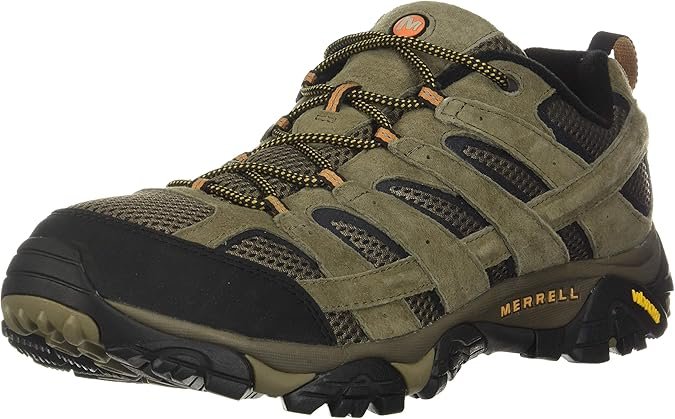

Understanding Your Hiking Needs
Before embarking on any hiking adventure, it is essential to identify your hiking needs. Every hiker has a unique style, characterized by their preferences, the environment they choose to explore, and the duration of their hikes. Understanding these factors is crucial when selecting appropriate hiking gear, as it can greatly enhance your experience and ensure your safety on the trails.
There are various types of hikes you might consider, each demanding different levels of preparation and gear. Day hikes, for instance, usually require minimal gear, as you’ll only be out for a few hours. These expeditions often demand lightweight clothing, sufficient water, and snacks for energy replenishment. On the other hand, multi-day treks necessitate more extensive preparation and a more robust selection of gear. When planning a longer hike, consider items such as a durable backpack, a quality tent, a sleeping bag, cooking equipment, and appropriate food supplies.
The environment in which you will hike also significantly influences your gear selection. For example, hiking in colder or wetter climates will necessitate insulated jackets, breathable layers, and waterproof boots. Alternatively, warmer regions may require lightweight clothing and sun protection. Furthermore, if you plan to hike in mountainous terrains, investing in specialized footwear can provide the necessary support and traction needed for challenging trails.
Assessing your physical condition is an additional step that should not be overlooked when determining your hiking needs. Understanding your fitness level can help you choose trails that match your capabilities and ensure that the gear you select offers the necessary support without causing discomfort. Finally, incorporating personal preferences, such as style and additional features, will help you find hiking gear that not only functions well but also aligns with your individual taste.
Essential Hiking Gear Categories
When preparing for a hiking adventure, understanding the essential categories of hiking gear is paramount. Each category serves a specific purpose and contributes to the overall hiking experience in terms of safety, comfort, and enjoyment. The main categories to consider include footwear, clothing, backpacks, navigation tools, and safety equipment.
First and foremost, footwear is crucial. Proper hiking shoes or boots provide support, traction, and protection against rough terrain. Look for features such as waterproof materials, breathable fabrics, and cushioning. Popular options include trail running shoes for lighter hikes and sturdy hiking boots for more challenging terrains. Each option has its pros and cons, making it vital to choose based on your hiking style.

Next, clothing is essential for maintaining comfort while hiking. Layering is key; the base layer wicks moisture, while the middle layer provides insulation, and the outer layer protects from the elements. Fabrics like merino wool or synthetic materials offer better moisture management compared to cotton. Additionally, consider sun protection and weather resistance when selecting hiking apparel.
Backpacks are another critical aspect of hiking gear. A good backpack distributes weight evenly and allows for easy access to essential items. Look for features such as adjustable straps, multiple compartments, and hydration systems. Evaluate your hiking duration and choose backpack capacity accordingly, with daypacks for short hikes and larger backpacks for extended trips.

Navigation tools cannot be overlooked. Traditional maps and compasses are still relevant; however, GPS devices and smartphone apps have gained popularity for their convenience. Ensure the chosen device is durable and has a long-lasting battery life.

Lastly, safety equipment includes items such as first aid kits, headlamps, and whistle devices. These tools are essential for addressing emergencies and enhancing overall safety during hikes. Look for user-friendly kits that are easy to carry and suitable for the type of hiking you plan to undertake.
Materials and Technology in Hiking Gear
When it comes to selecting the right hiking gear, understanding the materials and technologies used in their construction is crucial. The performance of hiking gear is largely influenced by the fabrics utilized, which can be broadly categorized into moisture-wicking fabrics, waterproofing treatments, and insulation technologies. Each type of material offers unique benefits, especially in varied weather conditions encountered on the trails.
Moisture-wicking fabrics, such as polyester and nylon, are designed to pull sweat away from the body, keeping hikers dry and comfortable during strenuous activities. These synthetic materials dry quickly and are lightweight, making them a popular choice for base layers. On the other hand, natural fibers, like cotton, may not wick moisture effectively and can absorb water, leading to discomfort and potential hypothermia in cold conditions. Thus, choosing synthetic materials for base layers is generally advisable.
Waterproofing treatments are another critical element in hiking gear. Fabrics, such as Gore-Tex® and other breathable membranes, offer protection against rain and moisture while allowing moisture vapor to escape, thus preventing overheating. While these treatments provide excellent waterproofing, they can add to the cost and weight of the gear, which are considerations for many hikers. Innovations in this area are continuously evolving, with newer technologies aiming to enhance breathability while maintaining waterproof capabilities.
Insulation technologies also play a vital role in outdoor gear. Materials like down and synthetic insulation each have their strengths and weaknesses. Down provides superior warmth-to-weight ratios but can lose insulation properties when wet. Conversely, synthetic insulation offers better wet-weather performance but is generally heavier. Therefore, the choice of insulation should reflect the expected weather conditions and the level of activity anticipated during the hike.
Recent advancements in hiking gear technology have introduced features designed to enhance safety, durability, and comfort. From integrated GPS tracking in clothing to advanced cushioning in footwear, these innovations help campers and hikers to navigate unpredictable terrains with confidence. By understanding the materials and technologies available, outdoor enthusiasts can make informed choices that enhance their overall hiking experience.

Budgeting for Your Hiking Gear
When it comes to adventuring into the great outdoors, having the appropriate hiking gear is crucial for both safety and enjoyment. However, budgeting for this equipment requires careful consideration of quality and cost. The initial step in creating a budget is to assess your hiking habits. If you are an occasional hiker, you may not need to allocate a significant amount of money towards gear. Conversely, frequent hikers might need to invest more in durable, high-performance equipment.
It’s essential to prioritize your purchases based on your specific needs. Start with the essentials—such as footwear, hydration systems, and weather-appropriate clothing. These items are foundational, as they significantly contribute to both comfort and safety during hikes. Once the basic necessities are addressed, you can evaluate other categories such as navigation tools, camping essentials, and specialized accessories. Spending on these extras can often be deferred until you have a better understanding of your hiking frequency and the environments you will be exploring.
Understanding when to splurge versus save is another important aspect of budgeting for hiking gear. While it may be tempting to seek out the lowest-priced items, lower cost often correlates with reduced quality. Investing in high-quality gear can provide long-term benefits such as enhanced durability, comfort, and functionality. Look for brands known for reliability, especially for critical items like waterproof jackets or supportive hiking boots.
Additionally, savvy shoppers can find excellent deals through online sales, clearance events, and reputable second-hand options. Seasonal discounts often yield substantial savings on quality gear. By strategically planning your purchases, you can build a reliable collection of hiking equipment without breaking the bank, ensuring you’re prepared for all your outdoor adventures.
